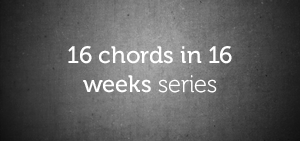There’s a secret relationship between black keys and white keys that I’ll be showing you in this lesson.
But before we get into all of that, it’s very important for us to refresh our minds on what black and white keys are and the difference between them.
So, what are black keys and how are they different from the keys categorized as white keys?
Black Keys Vs White Keys
The finger keys on the keyboard have two different colors: black and white.
There are twelve major keys on the keyboard and each of them can be associated with black or white and this depends on the color of the finger key.
For example, the key of C major:
…is described as a white key because the first tone of the C major scale (which is C):
…is a white note.
Apart from the key of C major which is entirely made up of white notes, it’s possible for a key to be made up black and white notes.
For example, the key of B major:
…consists of two white notes (B and E):
…and five black notes (C#, D#, F#, G#, and A#):
However, it is considered as a white key because its first tone (which is B):
…is a white finger key.
A Short Note On The Seven White Keys
In every octave, there are twelve notes:
Seven of them (C, D, E, F, G, A, and B):
…are white in color.
These notes have major keys where they’re the first tone (aka – “tonic”):
C major:
D major:
E major:
F major:
G major:
A major:
B major:
Quick Insights On The Five Black Keys
There are five black notes in every octave and they are spelled using letters and pitch modifiers (like sharp and flat symbols.)
Using the sharp symbol, here are the notes:
C#:
D#:
F#:
G#:
A#:
…and here’s an alternate spelling of the black notes using the flat symbol:
Db:
Eb:
Gb:
Ab:
Bb:
These black notes (five of them) are associated with a major key:
Db major:
Eb major:
Gb major:
Ab major:
Bb major:
The Relationship Between Black Keys And White Keys
There are twelve unique major keys in tonal music and although mastering them looks overwhelming, you can learn how they are related by key-signature.
The key-signature of a key distinguishes it from other keys and it is determined by the number of sharps or flat in that key.
The key-signature of F major is one flat:
F major:
One flat (Bb):
…while the key-signature of G is one sharp:
G major:
One sharp (F#):
Introducing: The Magic Number “7”
Relationship between a black key and a white key with the same letter name:
For example, Db major and D major.
…is that the total number of sharps and flats in their key-signature is equal to seven and that’s what makes seven the magic number for today.
For example, the key of D major has two sharps:
D major:
Two sharps (F# and C#):
…while the key of Db major has five flats:
Db major:
Five flats (Db, Eb, Gb, Ab, and Bb):
Altogether, the total number of sharps and flats in both keys are seven:
Two sharps + Five Flats = “Seven”
I’ll tell you more about key relationships as we proceed.
D Major Vs Db Major
In the key of D major:
…all the black notes (F# and C#):
…are white in the key of Db major:
and they are F and C respectively:
…while the white notes (D, E, G, A, and B):
…are black notes in the key of Db major:
…and they are Db, Eb, Gb, Ab, and Bb:
So, if you can think in a certain way:
- Thinking of black notes in Db major as white notes in D major
- Thinking of white notes in Db major as black notes in D major
…then you can play in both keys perfectly.
Using all the white notes on the piano from D to D:
You can add 5 flats (Db, Eb, Gb, Ab, and Bb):
…to produce the key of Db major:
…or you add two sharps (F# and C#):
…to produce the key of D major:
Other Black And White Key Counterparts
The same “D and Db” relationship is obtainable in the following counterparts:
E major and Eb major
G major and Gb major
A major and Ab major
B major and Bb major
“E Major Vs Eb Major”
Four Sharps Vs Three Flats
“G Major Vs Gb Major”
One Sharp Vs Six Flats
“A Major Vs Ab Major”
Three Sharps Vs Four Flats
“B Major Vs Bb Major”
Five Sharps Vs Two Flats
Final Words
Learning how to play in all the keys is easier if you master the secret relationship between these keys — 10 of them:
D major and Db major
E major and Eb major
G major and Gb major
A major and Ab major
B major and Bb major
Only C and F are the only keys that are not covered and they are pretty easy to learn because a vast majority of beginners’ resources are on C and F.
Thank you for your time today and see you in another lesson.
All the best!
Chuku Onyemachi
Latest posts by Chuku Onyemachi (see all)
- The Formation Of Diminished Seventh Chords Used To Be Challenging Until I Did This
- How To Form Seventh Chords In Two Shakes Of A Dog’s Tail Using Third Intervals And The Circle Of Fifths Chart
- I Played The 13sus4 Chord And This Happened…
- How To Build Seventh Chords Like An Architect Using “Foundation And Structure” Concept
- This 4-Week Plan Will Help You Master All The Major Scales







Comments on this entry are closed.